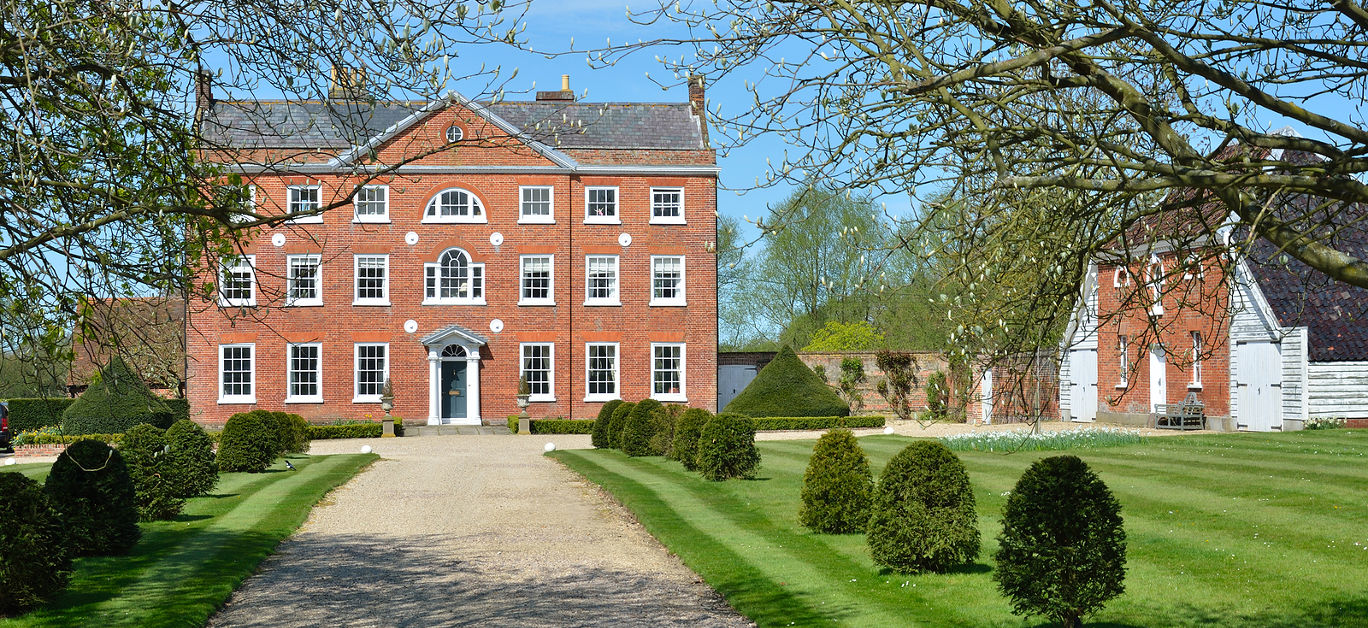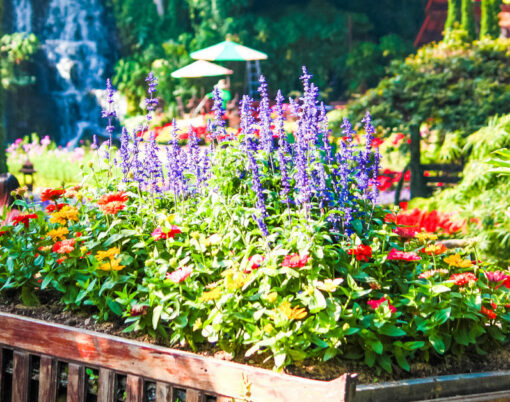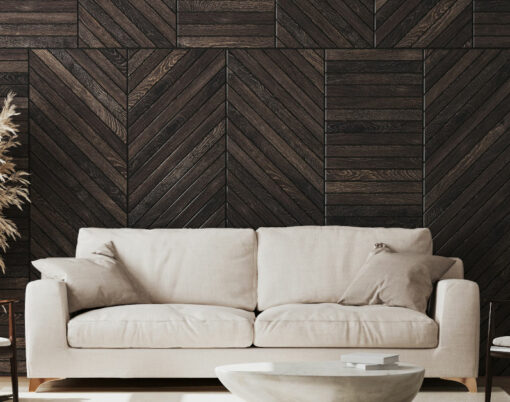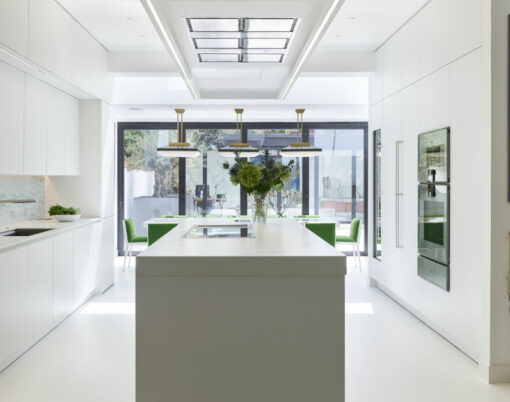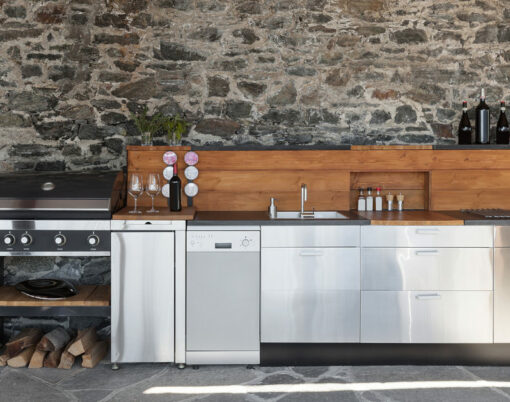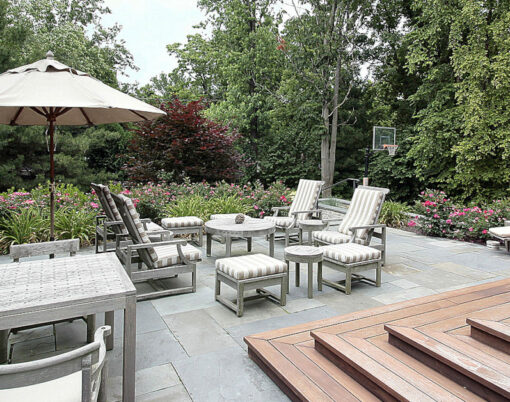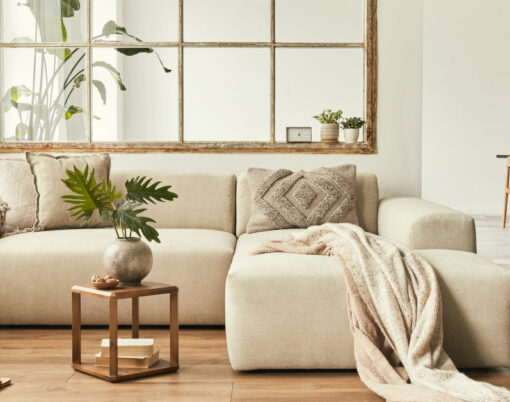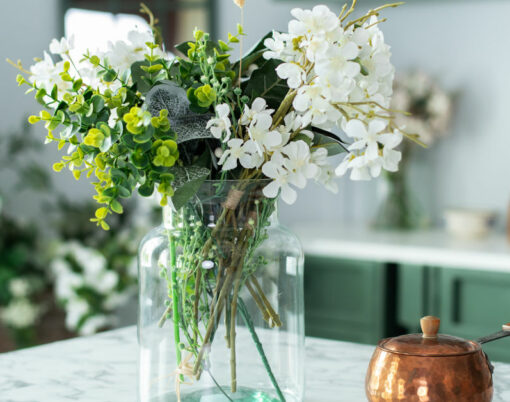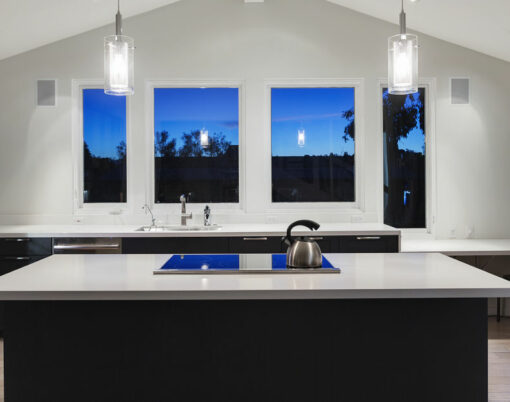Have you recently moved into a newly built property and are presented with a completely blank slate for a garden? While moving into a home that has well established plants and designated zones for your wants is easier, sometimes starting anew can be good to ensure that you create something completely tailored to your needs and it’s something that can make for an exciting and rewarding project.
If you’re keen to have your brand-new garden looking like an inviting oasis rather than a forgotten patch of grass then you’ve come to the right place. Read on as we explore a variety of ideas that will help you create the perfect luxury garden tailored to your style and needs.
Tie elements in with your house

When designing your garden, it’s important to consider the overall aesthetic of your house and tie elements together seamlessly to create a harmonious flow between indoor and outdoor spaces, and to give your garden a cohesive and polished look.
Start by examining the architectural style of your home. Is it modern and sleek? Or perhaps it has a more traditional or rustic feel? Take inspiration from these characteristics when selecting materials for pathways, fences, or even planters. For example, if you have a contemporary home with clean lines and minimalist features, opt for sleek metal accents or concrete pavers in your garden design.
Consider the colour palette as well. If your house is adorned with earthy tones like browns and beiges, incorporate these colours into your plant selections or outdoor furniture choices. On the other hand, if you have a vibrant coloured exterior, such as a red brick façade or blue siding, choose plants that complement those hues to create an eye-catching contrast.
Don’t forget about architectural details! Look closely at the windowsills, doors, or any unique features of your house that can be echoed in the garden design. You can replicate certain shapes through landscaping elements like curved flower beds or trellises covered in climbing vines.
Learning about different types of plants
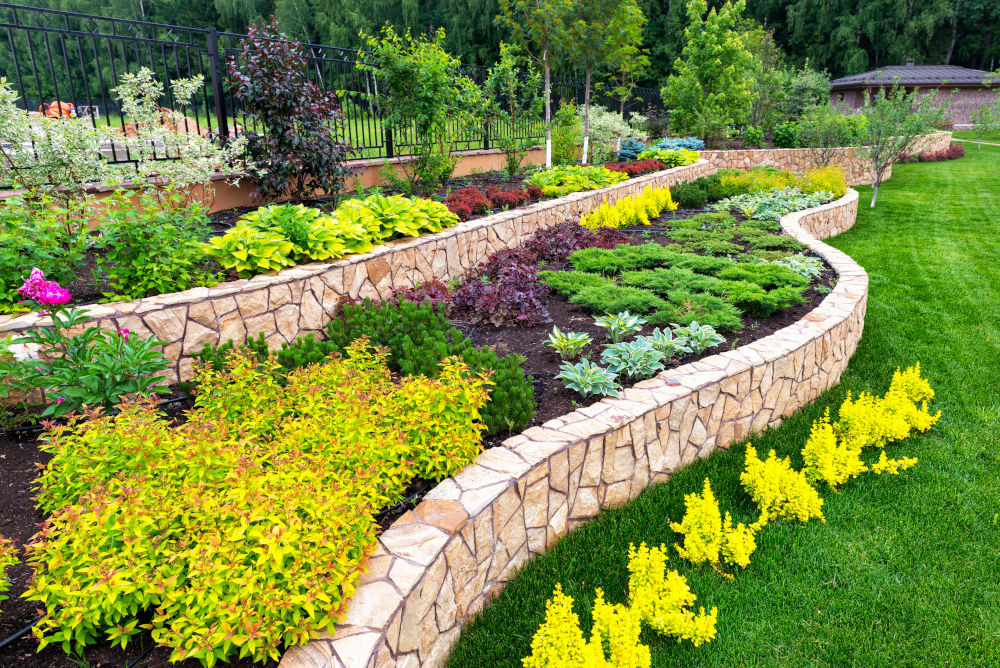
One of the most exciting aspects of designing a garden from scratch is learning about different types of plants if you’re a novice to the gardening world. Each plant has its own unique qualities and characteristics that can bring beauty and interest to your outdoor space.
Start by researching various plant species that thrive in your climate and soil conditions. Consider factors such as sunlight requirements, water needs, and maintenance levels. This will help you select the right plants for your garden. Explore a variety of flowering plants to add pops of colour throughout the seasons. From vibrant tulips in spring to delicate roses in summer, there are countless options to choose from. Don’t forget about foliage plants too – they can provide texture and visual interest even when not in bloom.
Consider incorporating native plants into your garden design. Not only do they offer natural beauty, but they also support local ecosystems by attracting native wildlife like birds and butterflies. Don’t be afraid to experiment with different types of gardening techniques as well. Try container gardening for small spaces or vertical gardening for added dimension. You might even want to explore hydroponics or aquaponics systems if you’re feeling adventurous.
Learning about different types of plants is an ongoing journey – so embrace it! Join online forums, stay up to date with online gardening resources like Gardenersyards.com or attend local gardening workshops to expand your knowledge. The more you learn, the more confident you’ll become in selecting the perfect combination of plants for your luxury garden design project.
Create zones
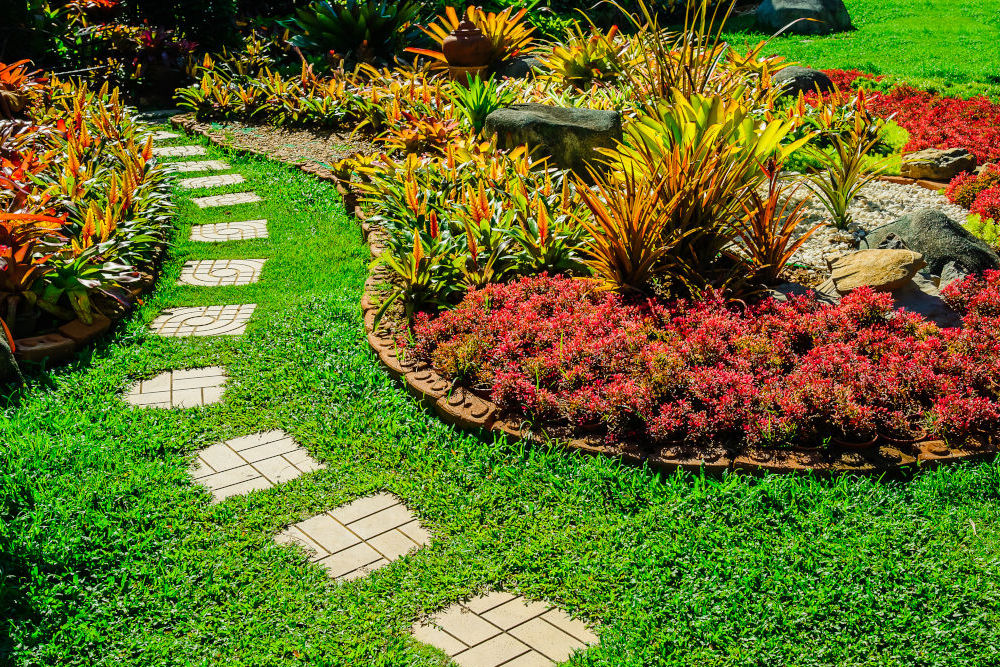
Creating different zones in your garden is a great way to add interest and functionality to the space. By dividing your garden into distinct areas, you can create unique spaces for various activities or moods.
Start by assessing how you intend to use your garden. Do you want a cosy spot for reading and relaxing? Or perhaps an area for outdoor dining and entertaining? Once you have identified the different functions, it’s time to start designing.
Consider using hedges, fences, or even pergolas as physical boundaries between zones. This creates a sense of separation while also providing privacy. You could also experiment with different materials like paving stones or gravel to define each space visually. Each zone should have its own focal point or feature that sets it apart from the rest of the garden. This could be a beautiful flower bed, a water feature, or even some stylish outdoor furniture.
Don’t forget about pathways – they not only provide practicality but also help guide visitors through each zone seamlessly. Use stepping stones or gravel paths to connect the different areas and create visual flow and consider incorporating plants that complement both sides of the divide.
Privacy and shade
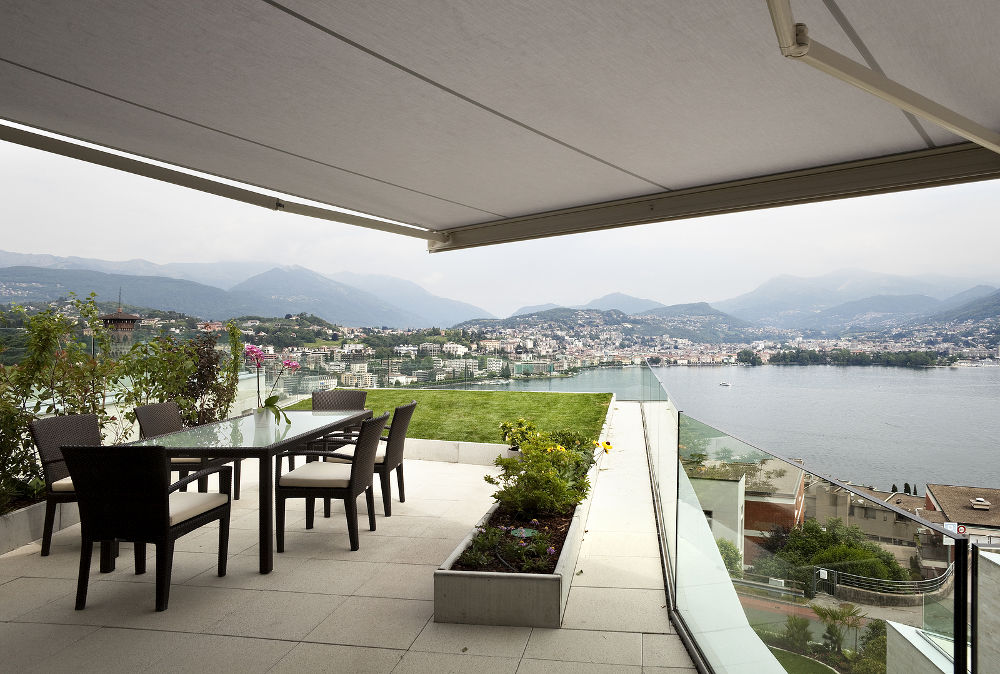
Creating a secluded oasis where you can relax and unwind is essential for many homeowners and so privacy and shade are two important aspects to consider when designing your garden. One way to achieve this is by incorporating tall hedges or fencing around the perimeter of your outdoor spaces. These natural barriers not only provide privacy but also act as windbreaks, shielding your outdoor space from harsh weather conditions.
In addition to physical structures, you can use plants strategically to create shade and enhance privacy in your garden. Consider planting trees with dense foliage that will cast cooling shadows during hot summer days. Bamboo screens or trellises covered in climbing vines are another great option for adding both shade and seclusion.
If you prefer a more contemporary look, installing retractable awnings or outdoor blinds can give you control over how much sunlight enters your garden at different times of the day. These versatile solutions allow you to create shaded areas when needed while still enjoying the warm rays of the sun when desired.
Don’t forget about decorative elements such as pergolas or gazebos that offer both privacy and sheltered spaces within your garden. By carefully selecting materials, colours, and textures that complement the overall design aesthetic of your home, you can seamlessly integrate these structures into the surrounding landscape.
An area for relaxing and entertaining
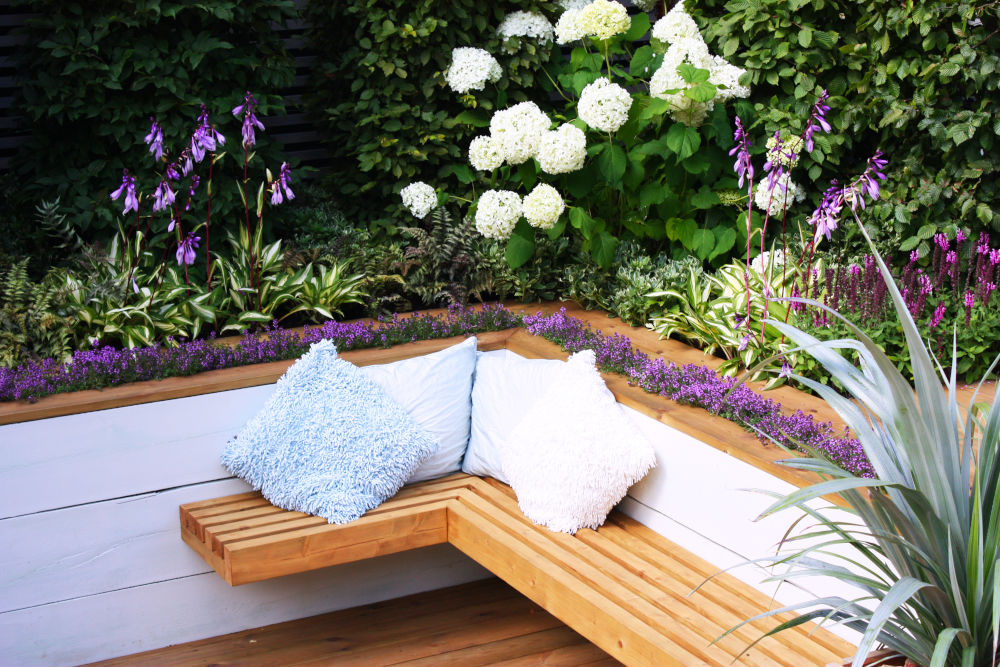
An area for relaxing and entertaining is an essential element of a luxury garden design to ensure you’ll have a luxurious retreat right at your doorstep. It’s the perfect space to unwind after a long day, host gatherings with friends and family, or simply enjoy the beauty of nature.
To create this inviting space, start by selecting comfortable outdoor furniture that complements your style and fits well in the overall design of your garden. Consider investing in high-quality seating options such as plush sofas or lounge chairs that provide both comfort and elegance.
Next, add some decorative elements like throw pillows, rugs, and lanterns to enhance the cosy atmosphere. These small touches can make a big difference in creating a welcoming ambiance for relaxation or entertaining guests.
Don’t forget about lighting – Install ambient lighting fixtures such as string lights or lanterns to create a warm glow during evening gatherings. This will not only add charm but also extend the usability of your outdoor area into nighttime hours. Incorporate natural features like water fountains or fire pits to further elevate the overall experience. The soothing sound of flowing water or crackling fire can help create a serene environment where you can truly unwind.
An area for outdoor cooking
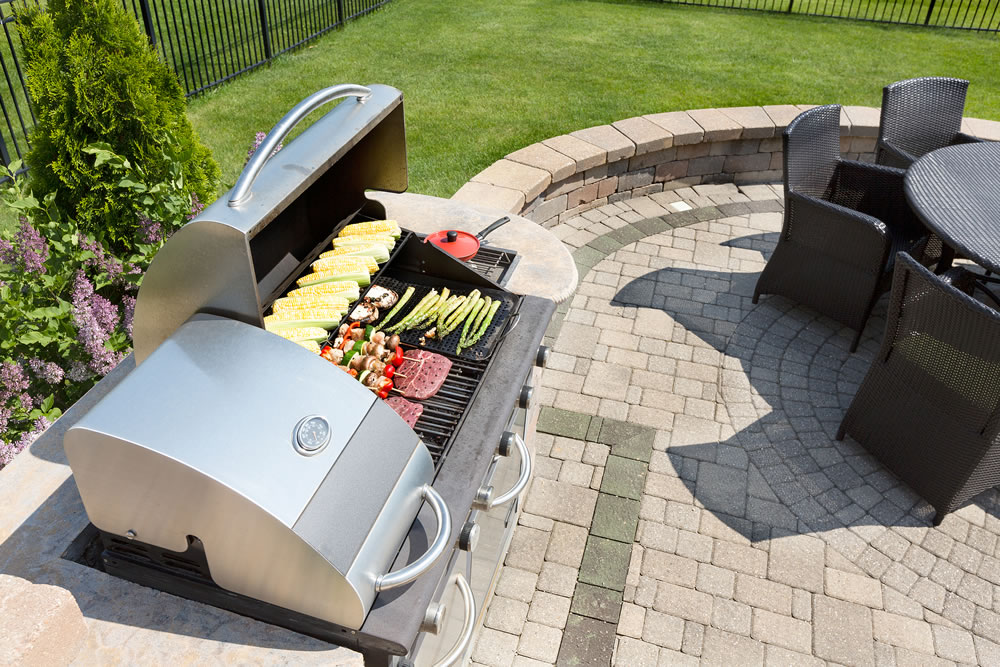
Imagine the sizzle of succulent steaks on the grill, or the aroma of freshly grilled vegetables wafting through the air. An outdoor kitchen is not just about practicality, but also creating an inviting space for friends and family to gather.
When designing your outdoor cooking area, consider incorporating built-in grills or pizza ovens that seamlessly blend with your overall garden aesthetic. You can choose from sleek stainless steel designs for a modern look, or opt for rustic stone finishes to create a cosy ambience.
Don’t forget to incorporate ample counter space and storage options in your outdoor kitchen setup. This will make meal preparation more convenient and keep all your essential tools close at hand.
To enhance the ambiance of your cooking area, consider adding some atmospheric lighting fixtures such as hanging lanterns or string lights overhead. This will allow you to continue enjoying your luxurious garden even after nightfall.
An outdoor spa

An outdoor spa can be the ultimate luxury addition to your garden design. Imagine soaking in a hot tub surrounded by lush greenery, feeling the warm water melt away your stress and worries. It’s like having a personal oasis right outside your door.
When designing an outdoor spa, consider the layout and placement. You’ll want it to be easily accessible from your house, but also have some privacy so you can fully relax. Perhaps you could create a secluded area with tall plants or install a gazebo for added tranquillity.
To enhance the spa experience, incorporate elements like soothing lighting and calming music. Softly lit pathways leading to the spa can create a sense of anticipation and serenity. And don’t forget about comfortable seating and lounging options nearby for when you’re ready to dry off and unwind.
In terms of aesthetics, choose materials that blend harmoniously with nature such as wood or stone tiles. Adding natural features like waterfalls or fountains can further enhance the ambiance.
An area for children

If you have children then having an area for them to play, explore and connect with nature is essential. Creating such an area not only encourages outdoor activities but also sparks their imagination.
When designing this space, consider incorporating elements that cater to different age groups. You could have a small sandbox for younger children to dig and build sandcastles in or set up swings and slides for older ones to enjoy. Another idea is to create a mini-garden specifically for the little ones. Let them plant seeds, water the plants, and watch them grow. This not only teaches them about nature but also instils responsibility as they care for their own little green haven.
Don’t forget about safety! Ensure that any equipment or structures are child-friendly and securely anchored. Soft surfaces like rubber mulch or artificial grass can help cushion falls and reduce injuries. Also be sure to involve your children in the design process by asking them what they would like in their play area. This way, you’re creating a space that truly reflects their interests and fosters creativity.
Taking inspiration from around the world
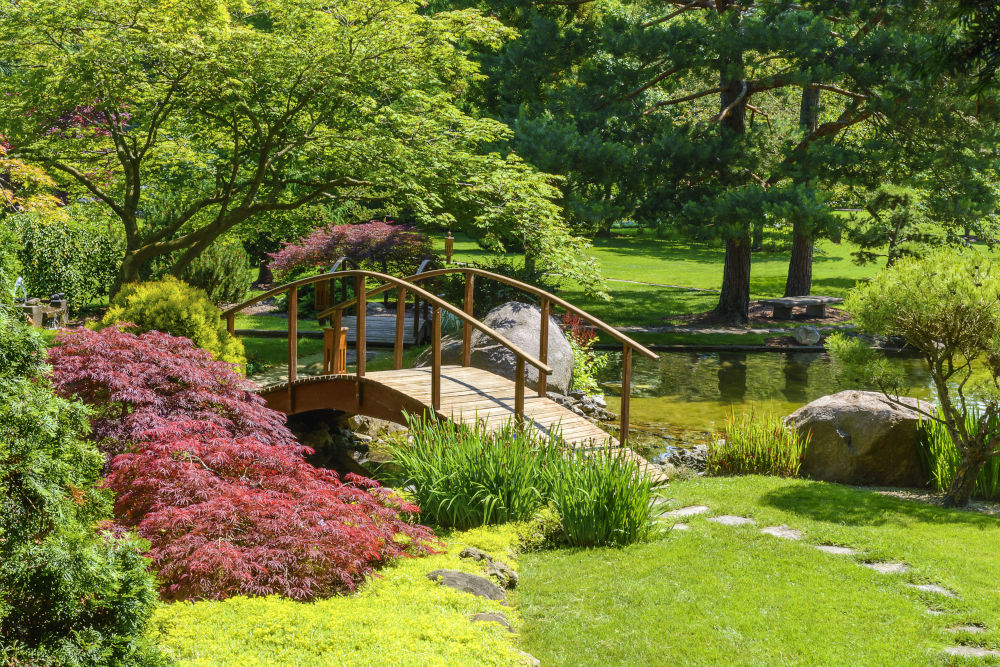
Whether you’re drawn to the vibrant colours of Moroccan architecture or the minimalist beauty of Japanese gardens, there are endless possibilities to explore when designing your garden.
One idea is to incorporate elements from tropical destinations like Bali or Hawaii. You could create a lush oasis with palm trees, colourful flowers, and even a small waterfall or pond. This would give your garden a resort-like feel and transport you to paradise every time you step outside.
If you prefer a more tranquil and Zen-inspired space, look to traditional Japanese gardens for inspiration. These gardens often feature carefully placed rocks, raked gravel patterns, and simple yet elegant plantings. By incorporating these elements into your design, you can create a peaceful retreat where you can unwind and find inner harmony.
For those who love European charm, consider drawing inspiration from French or Italian formal gardens, which showcase symmetry and precise designs with neatly trimmed hedges and geometric patterns. Another option is Mediterranean-inspired design which embraces the sunny climate with terracotta pots filled with herbs such as rosemary and lavender surrounding paved walkways flanked by olive trees.












